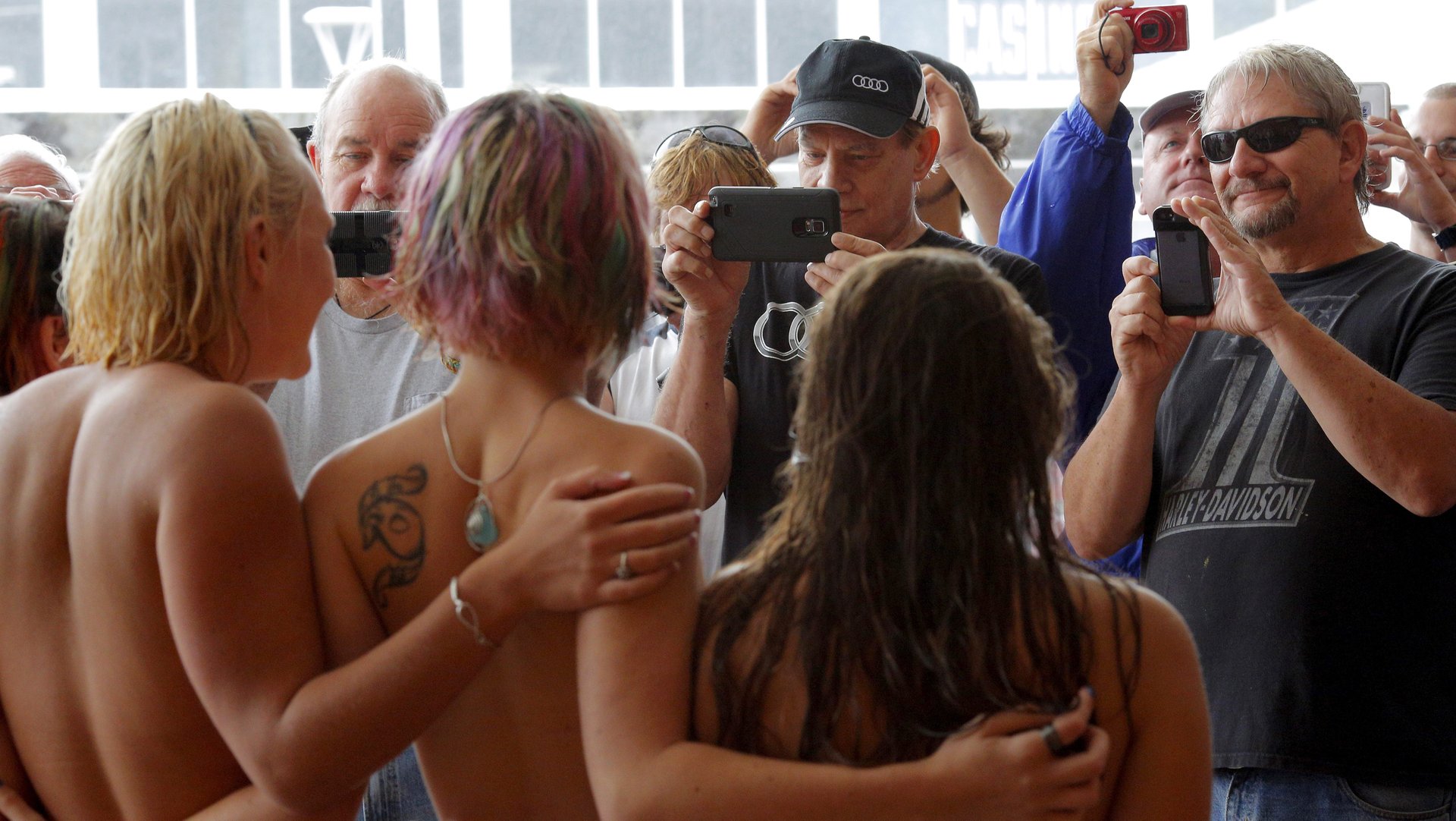The UK’s biggest independent children’s book publisher is recalling a book that tells boys “what breasts are for”
A British publisher of children’s books has some soul searching to do, as it attempts to figure how to explain to boys: What, exactly, are breasts for?


A British publisher of children’s books has some soul searching to do, as it attempts to figure how to explain to boys: What, exactly, are breasts for?
Usborne Books has decided to pull Growing Up for Boys, by Alex Frith, from the shelves, after a blogger called out a major issue with a passage explaining the function of womens’ breasts. Usborne, a large independent publisher, said last week it would revise the text and destroy remaining copies of the current edition.
The book, published in 2013, is a 280-page guide to puberty for boys, with chapter titles like “Why is this happening to me?” “Coping with erections,” and “It’s different for girls.” The book is in its seventh edition and has sold around 26,000 copies, according to the New York Times.
Simon Ragoonanan blogs about fatherhood and his five-year-old daughter’s “struggle against pinkification,” referring to products marketed toward girls with “girl colors.” On Aug. 27 he posted on Facebook about Growing Up for Boys. Ragoonanan pulled out this passage from the book:
Girls have breasts for two reasons. One is to make milk for babies. The other is to make the girl look grown-up and attractive. Virtually all breasts, no matter what size or shape they end up when a girl finishes puberty, can do both things.
“Wtf?” wrote Ragoonanan.
Indeed, females of all mammals have mammary glands for lactation, and in humans, those glands lie beneath the surface of women’s breasts. But the second part of the explanation in Growing Up for Boys is, for many, galling. Tweeters and Facebook commenters responded to Ragoonanan, taking issue with the notion put forth by this book that breasts also primarily exist to make girls look like attractive adults—i.e. to serve the desires of post-pubescent boys.
“If we want to encourage our children to have healthy relationships with each other and if we want to build a culture of consent, suggesting body parts exist solely for their ‘use’ by another person, seemingly outside of the control of the person the body part belongs to, is at the best, disempowering and at the worst, very dangerous,” children’s bookseller Fen Coles told the Guardian.
“This particular chapter aimed to explain and demystify to boys what girls go through at puberty, and to promote mutual respect and understanding,” Usborne wrote on its corporate site. “We are troubled that in some reports the wording has been misreported and taken out of context. However we recognize that this particular content needs revising and we are doing that already.” (The company has declined to provide context on the missing context.)
“If any parent read the entire book and felt concerned that young boys would grow up thinking they had a biological right to objectify women, then I am horrified,” the author said in an email to the Times.